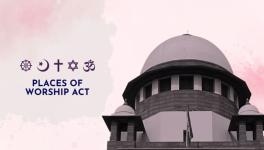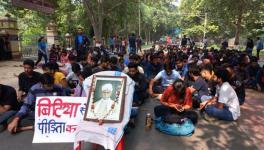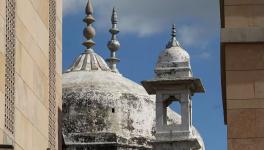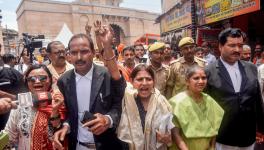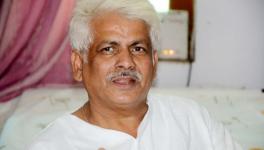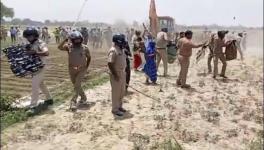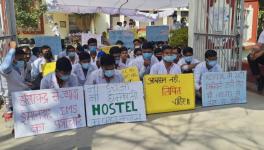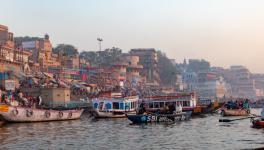Religious Rows Help Politics, not Faith
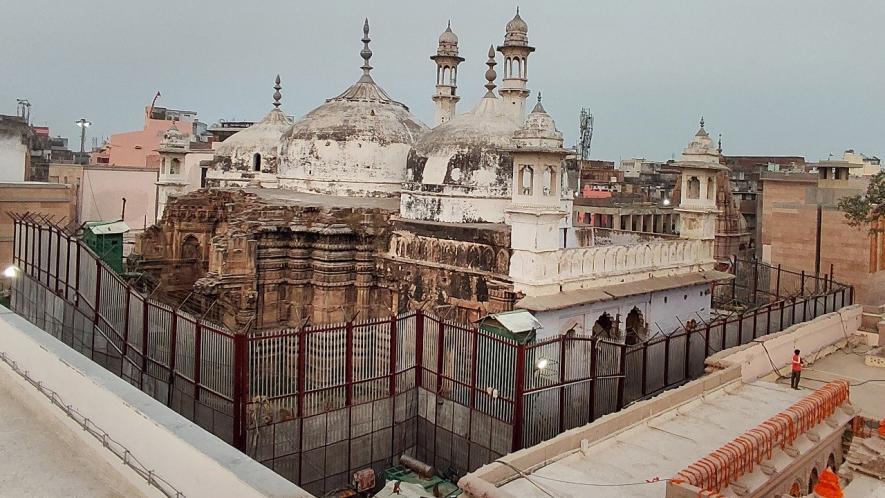
Image Courtesy: PTI
Prof Rana P.B. Singh, former professor of Cultural Landscapes and Heritage Studies at the Banaras Hindu University, specialises in writing and research into the cultural landscapes of Varanasi. Over fifty years, he has authored numerous books about the religious and historical landscape of the region. In this interview with NewsClick, he says he is saddened by the mandir-masjid dispute engulfing the city. He believes the controversy about the Gyanvapi mosque is inimical to its ethos. Edited excerpts.
What are your views on the claim that there is a shivling in the reservoir of the Gyanvapi mosque, which the mosque management and Muslims claim is simply a fountain?
This controversy has been created. Hindu and Muslim issues have always been a domain of great complexity. We have to go by the evidence, historical, visual, iconographic, and cartographic, all of which have been published. Let me give you a brief historical perspective. The antiquity of Varanasi can be traced to 1600 BCE. An archaeological artefact called the Avimukteshwara seal, which symbolises a form of Shiva, was found at Rajghat in Varanasi, dated from the sixth to eighth century BCE.
The Chinese pilgrim Xuanzang (CE 602-664) visited the city and wrote about a popular temple called Devadeva, which was later called Vishwanatha. A mosque came to be built here called the Bibi Razia mosque. Over time, a temple was built on its rear portions, which, in turn, was entirely demolished by [Afghan ruler] Sikandar Lodi. The temple was then rebuilt in the 16th century under the patronage of Mirza Raja Man Singh of Amer with the support of Todar Mal, a courtier of the Mughal ruler Akbar and the great writer Narayana-Bhatta, only to be demolished yet again by [Mughal ruler] Aurangzeb and the Gyanvapi mosque was built on this site.
Twenty per cent of the rear portion of the temple was not demolished and remains to this day. The temple was rebuilt yet again by Queen Ahilyabai Holkar of Indore. This temple is called the Kashi Vishwanath, and since 1780, the worship of Shiva has continued uninterrupted here.
The question is, the Banaras Hindu University (BHU) is a premier central university of the country with a history and archaeology department and the biggest ancient history department in Asia with 17 distinguished professors. Why have they not conducted detailed research and study on the Kashi Vishwanath temple and its historicity during the last two years? Their findings would have gone a long way to diffuse this present controversy. When this new temple has been accepted, and lakhs of Hindus pray here, why should a new controversy be created and that too in the face of all this archaeological evidence? There are hundreds of such sites across the country. Are all of these going to be made into issues of dispute in the future? How many sites do we want to change into trouble spots? We are back to the same divide-and-rule policy started by the British.
The key question is the assertion of the Hindutva brigade that Nandi, the seated bull accompanying depictions of the Hindu god Shiva, faces the fountain/shivling, which means it was a temple.
The Hindutva side comes to me and says, ‘Aap hamarey paksh mein bolein—please speak in our favour.’ If I do so, I will be committing a fraud. We have to go by scientific literature, which confirms that this was a temple converted into a mosque. Eighty per cent of it is a mosque, and 20% has remained a temple. The Nandi was not there in the original temple but was installed there in 1820. The Nandi is not facing North but is inclined 20 degrees to the South. So there is no proper alignment with the shivling as is the case in all our temples.
Now, I have written eleven books on Varanasi and 142 papers on the sacred geography of this city, but look at the kind of superstition people today indulge in! They are going to the Nandi statue, putting their ear to his mouth and saying he whispered to them, ‘Soon you will be able to see your master.’ I am a practising Hindu. I pray to our deities every day but cannot be a party to all this propaganda and rabble-rousing that is going on. Of course, the question can be asked if there was a shivling in the original Vishwanatha temple, which got destroyed. But where is that shivling? I have no idea. It has not been found to this day. It may be lying somewhere, but no one knows. The Archaeological Survey of India has not surveyed the complex to find out.
But in terms of research, the Allahabad High Court ordered the carbon dating of the fountain to ascertain its antiquity, which the Supreme Court has put on hold for now.
Whoever gave this order must have been mad! Carbon dating can be done of objects younger than 50,000 years and organic, such as trees and plants, but most stones are older than 50,000 years! Can carbon dating tell you the period when any stone became a shivling? That is all in the realm of faith.
There is also a claim that this was a site of Buddhist worship before being a temple, and that the name Gyanvapi indicates Hindu origins. What do you make of such arguments?
Excavations show Buddhism did have a presence in this region. The area where the mosque was built is called Gyanvapi, which is how the mosque got its name. The local people have no issue with the mosque being called by that name.
A petition challenging the constitutionality of the Places of Worship (Special Provisions) Act of 1991 has been filed before the Supreme Court. What are the implications of such legal claims?
The demolition of the Babri masjid in 1992 saw a change come over the psyche of most Hindus! They now feel that if Muslims could break our religious structures in the past, we can now do the same. They now believe if our temples are being audited and temple trusts are being made to pay taxes, so should masjids and churches. Like the dargah at Ajmer, there are many other dargahs in the country where most visitors are Hindus, but how many Muslims visit Hindu temples? People can raise questions, but my point is, history is a continuous process and all such controversies are best avoided. Destroying religious sites will serve no purpose. Nor will there be any end to this. The public must not become a tool in the hands of politicians.
(Rashme Sehgal is an independent journalist.)
Get the latest reports & analysis with people's perspective on Protests, movements & deep analytical videos, discussions of the current affairs in your Telegram app. Subscribe to NewsClick's Telegram channel & get Real-Time updates on stories, as they get published on our website.









